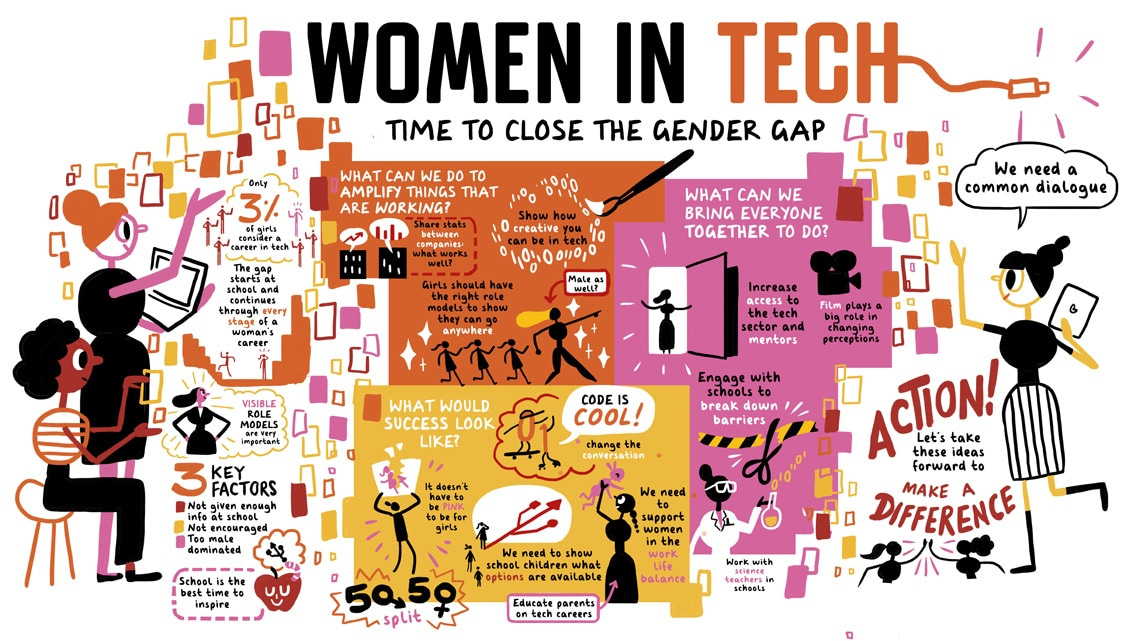Women in Tech from 1930 to 1990
Introduction
From the 1930s to the 1990s, women made remarkable contributions to technology and computing, forging new paths in a male-dominated field. Despite facing gender biases and systemic barriers, they were instrumental in the creation of programming languages, computing hardware, and key software systems that shaped the technological world. Their stories underscore perseverance, ingenuity, and the undeniable impact of diversity on innovation. Below is an exploration of their pioneering roles and achievements during this transformative period.
Early Roles: The 1930s and 1940s
In the 1930s, women were often employed as “human computers,” particularly in scientific settings where large-scale calculations were needed. For instance, at the Harvard University Astronomy Department, women known as the “Harvard Computers” performed detailed astronomical calculations, aiding advancements in space science.
During World War II, the demand for skilled workers to develop and operate calculating machines rose significantly. Women stepped into pivotal roles, calculating ballistics trajectories and performing other complex computations for the military. By the early 1940s, groups of women programmers worked on the ENIAC (Electronic Numerical Integrator and Computer) project, one of the earliest electronic general-purpose computers in the United States. Their efforts laid the groundwork for modern computer programming principles.
Pioneering Programmers: The 1950s
The 1950s introduced a new era of women leaders in technology. Grace Hopper, a U.S. Navy officer and computer scientist, was one of the most influential figures of this period. She played a central role in developing the first compiler, a tool that translates human-readable code into machine code. Hopper’s work laid the foundation for COBOL, a high-level programming language that became essential in business and government applications.
Many women also served as technical writers, systems analysts, and programmers in emerging computer companies. Their specialized knowledge in mathematics, logic, and problem-solving made them key contributors to an industry that was rapidly expanding. Despite these vital roles, their contributions were often overlooked, and they received fewer promotions or public recognition compared to their male counterparts.
Expanding Opportunities: The 1960s and 1970s
During the 1960s and 1970s, computing technology advanced rapidly, and women’s participation continued to grow. NASA’s space programs, notably Mercury and Apollo, depended on mathematicians and programmers—many of whom were women. Women like Katherine Johnson, Dorothy Vaughan, and Mary Jackson contributed to the success of space missions by performing complex calculations and leading teams in newly established computing divisions.
By the late 1960s, large tech firms began offering specialized training programs, some of which targeted women to fill in the growing need for programmers and systems analysts. Educational opportunities broadened as well, and more women pursued degrees in mathematics, computer science, and engineering. However, persistent societal stereotypes and limited mentorship often forced women to work harder to establish their credibility.
In the 1970s, several notable female computer scientists emerged from academic institutions, developing algorithms and programming languages still recognized today. Yet, their representation in managerial positions and faculty roles remained disproportionately low due to organizational and cultural hurdles.
The 1980s: Breaking Barriers and Setting Trends
The personal computer revolution of the 1980s further transformed the tech industry. As personal computers entered households and schools, more young women were introduced to computing at an earlier age. This visibility helped dispel some of the myths that tech was solely a “male domain.”
Even with expanding opportunities, women faced declining enrollment in computer science programs toward the end of the 1980s, partly due to the rise of personal computers being marketed primarily to boys and men. Despite this downturn, women who persisted—like Adele Goldberg, who co-developed the Smalltalk-80 programming language, and Radia Perlman, who invented the Spanning Tree Protocol for network bridges—demonstrated that women’s inventions remained vital to the industry’s evolution.
In the corporate sphere, women like Carol Bartz, who later became CEO of Autodesk and Yahoo!, and Roberta Williams, co-founder of Sierra On-Line and a pioneer of the graphic adventure game genre, paved new paths in technology leadership and software design. Their success stories helped inspire the next generation of women to see technology as a viable and exciting career path.
Conclusion
From early human computing teams to the forefront of software development and corporate leadership, women shaped every stage of tech’s evolution between 1930 and 1990. They broke through social barriers, contributed groundbreaking innovations, and demonstrated the importance of including diverse perspectives in scientific and technological endeavors. Their collective efforts and steadfastness laid the groundwork for the growing movement to foster inclusivity in the tech world—an ongoing journey that continues to this day.
References
Abbate, J. (2012). Recoding Gender: Women’s Changing Participation in Computing. MIT Press.
Computer History Museum. “Women in Tech Timeline.”
Hicks, M. (2017). Programmed Inequality: How Britain Discarded Women Technologists and Lost Its Edge in Computing. MIT Press.
National Women’s History Museum. “Women in STEM: Highlighting the Past and Present.”
Smithsonian National Air and Space Museum. “Calculating the Future: Women in Early Computing at NASA.”
IEEE Women in Engineering. “Historical Contributions of Women to Computing.”
NASA. “The Women of ENIAC: Programming Pioneers.”




